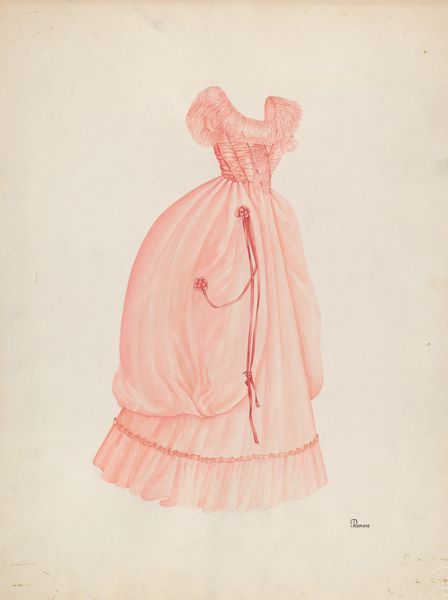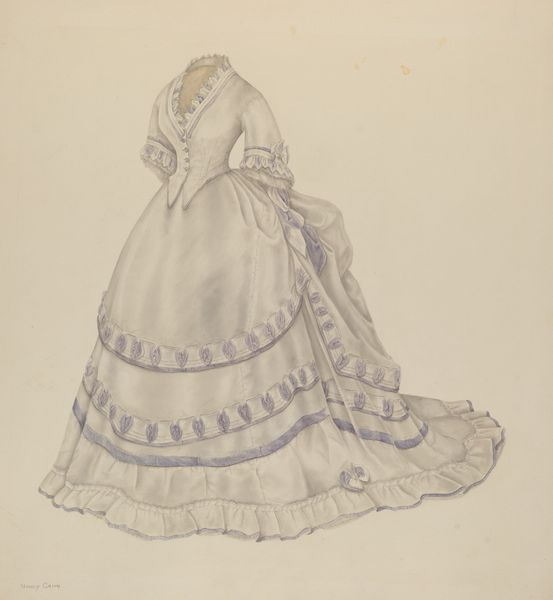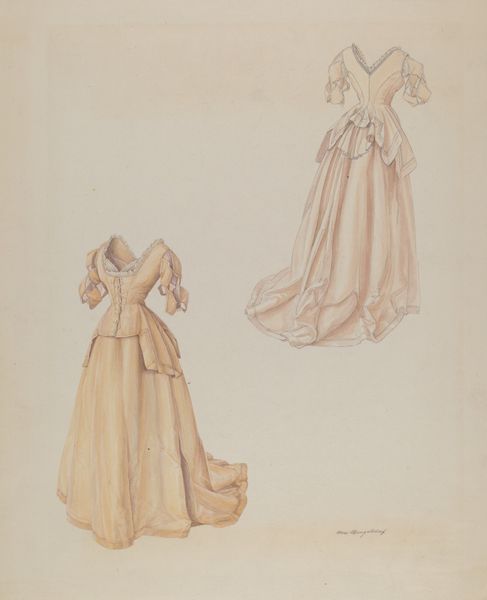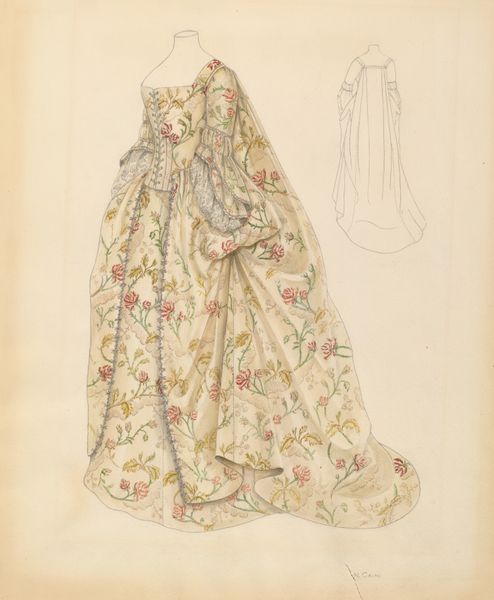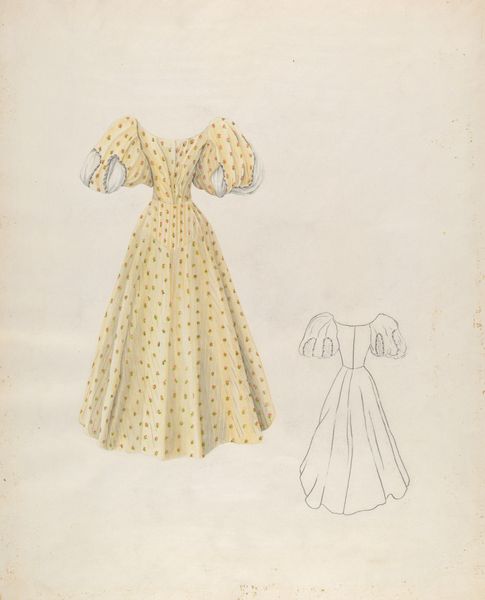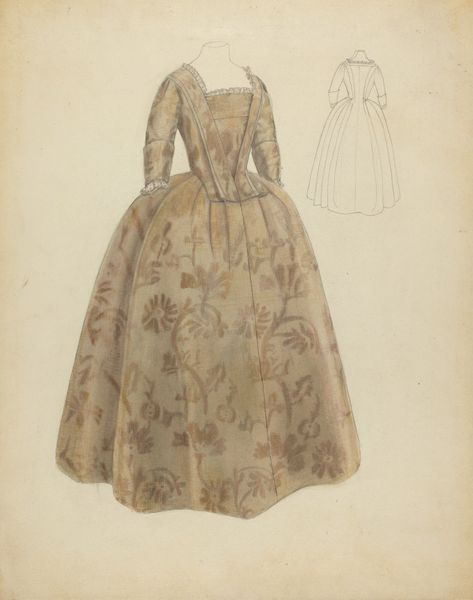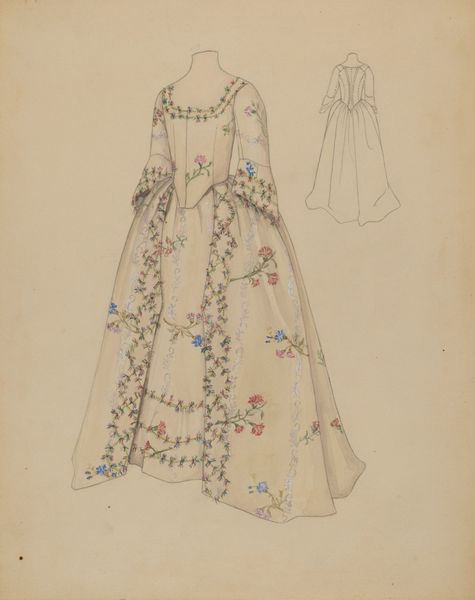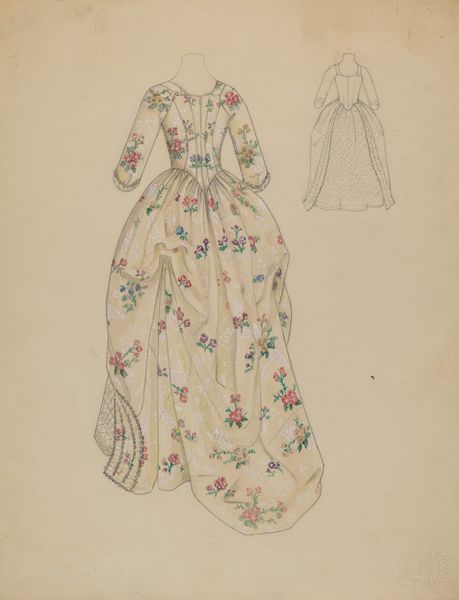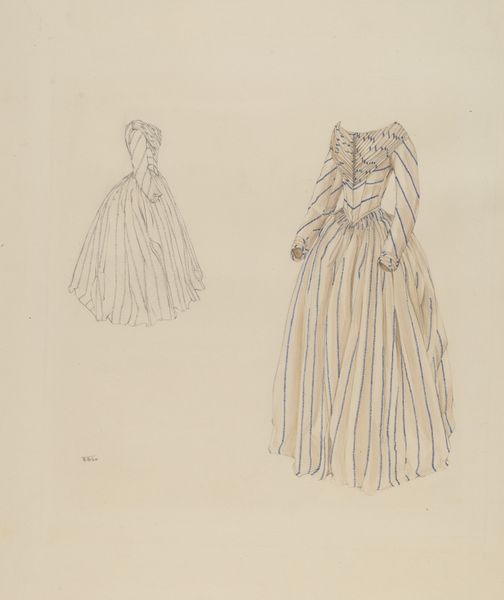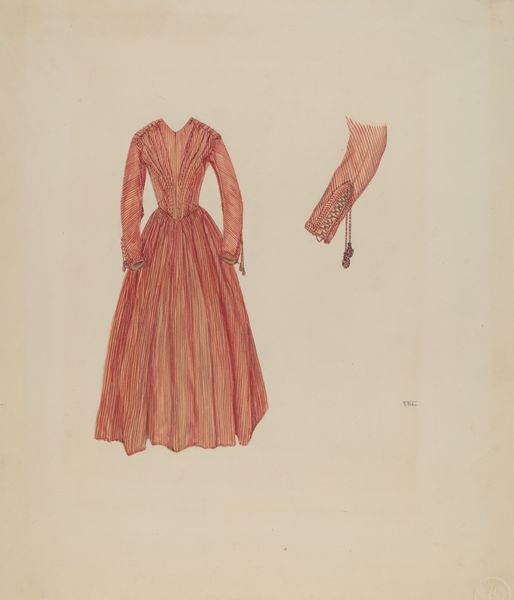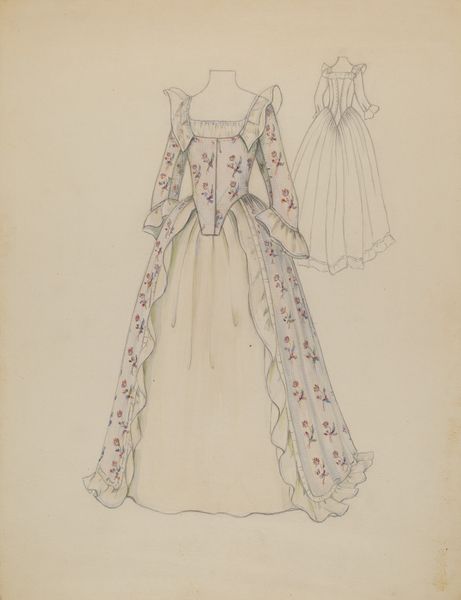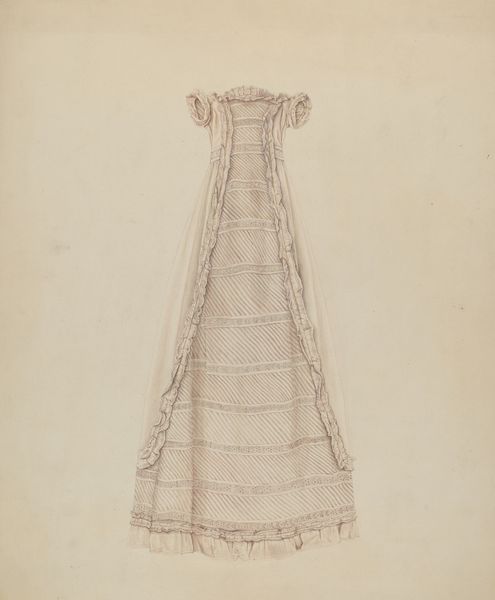
drawing, pencil
#
drawing
#
pencil sketch
#
pencil
#
watercolour illustration
#
academic-art
#
watercolor
Dimensions: overall: 44 x 36.3 cm (17 5/16 x 14 5/16 in.)
Copyright: National Gallery of Art: CC0 1.0
Curator: Here we have Arelia Arbo's "Wedding Dress," a watercolor and pencil sketch from around 1937. What strikes you immediately about this piece? Editor: Well, there’s a certain fragility. The soft colors, the almost ephemeral quality of the lines. It speaks to the fleeting nature of such momentous occasions and garments produced only for the elite. Curator: Absolutely. And if we think about the context – 1937, on the cusp of global upheaval – this drawing embodies a certain yearning for beauty and perhaps a refuge in tradition, specifically within the context of patriarchal marriage norms. Editor: Tradition undoubtedly plays a part. But I’m more interested in the dress itself, the labor involved. Look at the meticulous detail of the ruffles, the layering. Someone spent hours crafting this design. Curator: The means of production are relevant. Arbo presents the dress in three different stages. This resonates with current discourse around the slow fashion movement and the ethical implications of couture garment production, a craft now increasingly endangered, not only due to fast-fashion, but the devaluing of expert labour. Editor: I agree. Even the materials themselves – pencil, watercolour on paper – suggest a kind of intimacy, a directness from the artist's hand to the image that digital renderings can't replicate. And considering this may have been a preliminary drawing, we’re seeing a piece of the process, an artifact from material culture, more than just a finished illustration. Curator: It also speaks to the constraints placed on women in this era. Was fashion design a space where female creativity could flourish without threatening existing gender norms? Was Arbo’s creative voice enabled and possibly constrained through such craft work? Editor: It raises questions about who owns the means of producing and displaying images of material aspiration, or material conditions that might exclude certain bodies. It may signify both power, and dependence, revealing the limits and potentials for the female subject's representation. Curator: A powerful intersection of the personal and political, wouldn't you say? Arbo's drawing compels us to question the meanings we invest in objects, both yesterday and today. Editor: It truly does. This drawing has altered how I interpret garments today. They reveal so much.
Comments
No comments
Be the first to comment and join the conversation on the ultimate creative platform.
